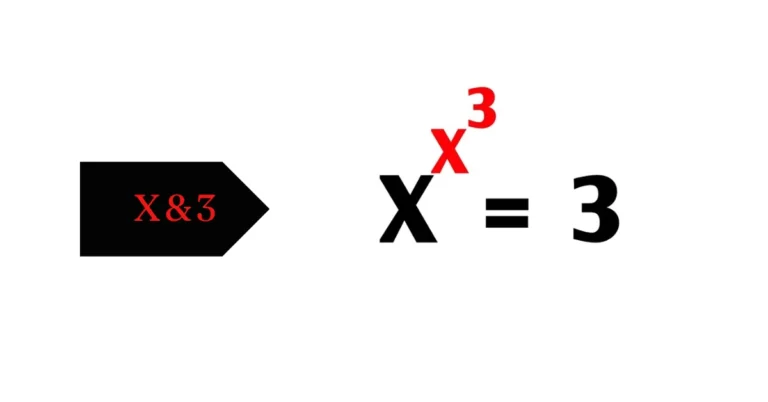Introduction to Modular Arithmetic
Modular arithmetic can seem like a complex topic, but it’s really just a fascinating way to think about numbers. Whether you’re crunching numbers for fun or need them for practical applications, understanding concepts like x&3 and x mod 4 is essential. These two expressions might look similar at first glance, but they have distinct meanings that play crucial roles in math problems and real-world scenarios.
If you’ve ever wondered how these operations work and where they apply, you’re not alone. Let’s dive into the intriguing world of modular arithmetic and uncover the differences between x&3 and x mod 4. You might be surprised by how often this knowledge comes in handy!
The Difference Between x&3 and x Mod 4
When exploring the difference between x&3 and x mod 4, it’s essential to understand their underlying mechanics. The expression x&3 uses a bitwise AND operation. This means it compares each bit of x with the binary representation of 3 (which is 11 in binary) and results in a number that retains only those bits where both numbers have a value of 1.
On the other hand, x mod 4 calculates the remainder when x is divided by 4. It provides values from the set {0, 1, 2, or 3}, depending on what’s left after division.
Although they may seem similar at first glance due to their limited outcomes (both yield values within a small range), they operate differently behind the scenes. Understanding these distinctions helps clarify how each method can be utilized effectively in various mathematical problems or programming scenarios.
Solving Equations with x&3 and x Mod 4
When solving equations involving x&3 and x mod 4, understanding their distinct operations is crucial.
The expression x&3 uses a bitwise AND operation. This means you’re focusing specifically on the last two bits of the binary representation of x. It’s useful for determining specific properties in programming or digital circuits.
On the other hand, x mod 4 finds the remainder when dividing by 4. This can be particularly handy in cyclic problems or scenarios where you need to wrap around values.
To illustrate this, consider an equation like (x & 3 = k). Here, k must be either 0, 1, 2, or 3 since those are all possible outcomes from that operation.
In contrast, if your equation looks like (x \mod 4 = m), m also takes values within that same range but reflects a different underlying calculation process.
These differences affect how you approach problem-solving effectively!
Examples of x&3 and x Mod 4 in Real Life
Modular arithmetic often finds its way into everyday scenarios, sometimes without us even realizing it. Take the example of timekeeping. When a clock shows 9 PM and you add six hours, you arrive at 3 AM. Here, the operation is akin to using x mod 12.
In technology, hash functions utilize modular arithmetic for efficient data retrieval. For instance, if a server needs to distribute tasks evenly across four processors, it may use x&3 to determine which processor should handle each task based on the input value.
Even in gaming mechanics like leveling up characters or determining loot drops can involve similar calculations. Players might encounter situations where their rewards are determined by applying x mod 4 or an equivalent bitwise operation. This keeps gameplay balanced and exciting while ensuring fairness among players with different levels of experience.
Advantages of Using Modular Arithmetic in Problem Solving
Modular arithmetic simplifies complex problems into manageable parts. By reducing numbers to their remainders, it makes calculations quicker and more efficient.
This method shines in computer science, particularly in algorithms and cryptography. It helps ensure data integrity and security by creating keys that are hard to crack.
In everyday life, modular arithmetic aids in scheduling tasks or managing time. For example, determining when a bus arrives can be streamlined using this system.
Additionally, it enhances pattern recognition skills. Understanding how numbers interact under different moduli can reveal underlying structures in various mathematical fields.
Using modular arithmetic also fosters creative problem-solving approaches. It encourages thinking outside the box and finding solutions that might not be evident with traditional methods.
By embracing this technique, mathematicians and enthusiasts alike discover new avenues for exploration within numerical challenges. Each application showcases its versatility across disciplines.
Common Mistakes to Avoid When Working with x&3 and x Mod 4
When working with x&3, one common mistake is confusing it with x mod 4. While both operations deal with remainders, they yield different results based on their binary and decimal logic.
Another frequent error involves assuming that all numbers will produce distinct outputs. With x&3, the output ranges only from 0 to 3 due to its bitwise nature. This can lead to misinterpretations in more complex calculations.
People often overlook the importance of understanding data types as well. Using integers versus binary representations can alter your outcomes significantly when applying these operations.
It’s also easy to forget that order matters in equations involving multiple operations. Failing to follow proper precedence rules could lead you down a path of incorrect conclusions.
Not practicing enough examples can hinder your grasp of these concepts. The best way to learn is through consistent application and problem-solving exercises.
Conclusion
Understanding the nuances of x&3 and x mod 4 can significantly enhance your problem-solving skills in mathematics. Modular arithmetic presents a unique way to handle calculations involving remainders, allowing for simplified solutions in various scenarios.
Recognizing the difference between bitwise operations like x&3 and modular expressions such as x mod 4 is crucial. Each method serves its purpose based on context. Whether you’re coding algorithms or tackling mathematical puzzles, having this knowledge at your fingertips offers an edge.
As you explore practical applications, you’ll find that these concepts are more than academic; they appear in everyday tasks—like clock arithmetic or computer science functions—and make them easier to grasp.
By steering clear of common pitfalls and understanding how both methods function, you’re well-equipped to apply them correctly. Such mastery opens doors to new possibilities in logical reasoning and analytical thinking.
Embracing these techniques not only sharpens your math skills but also prepares you for challenges ahead. So dive deeper into modular arithmetic with confidence!
FAQs
Q: What does x&3 represent in programming?
Ans: The bitwise AND operation x&3 isolates the last two bits of the integer x, effectively computing the result of x mod 4.
Q: How is x&3 equivalent to x mod 4?
Ans: Both x&3 and x mod 4 yield the same remainder when x is divided by 4, due to the bitwise operation capturing the same range of values.
Q: When should I use x&3 instead of x mod 4?
Ans: Use x&3 for performance optimization in low-level programming where bitwise operations are faster. Use x mod 4 for clarity and in higher-level programming.
Q: Are there any differences between x&3 and x mod 4?
Ans: Functionally, they produce the same result for positive integers. However, x mod 4 is more intuitive, while x&3 is a bitwise operation.
Q: Does x&3 work with negative integers?
Ans: Yes, x&3 works with negative integers, but the result might differ slightly from x mod 4 due to how negative numbers are handled in bitwise operations.

